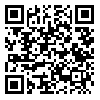Volume 6, Issue 3 (Shenakht Journal of Psychology and Psychiatry 2019)
Shenakht Journal of Psychology and Psychiatry 2019, 6(3): 1-14 |
Back to browse issues page
Download citation:
BibTeX | RIS | EndNote | Medlars | ProCite | Reference Manager | RefWorks
Send citation to:



BibTeX | RIS | EndNote | Medlars | ProCite | Reference Manager | RefWorks
Send citation to:
Amini Masouleh M, Ghazanfariyan Pour S, Beirami M. Comparison of the Effectiveness of Different transcranial direct current stimulation Protocols (tDCS) with Cognitive Exercises in Improving Response Inhibition in Normal Individuals. Shenakht Journal of Psychology and Psychiatry 2019; 6 (3) :1-14
URL: http://shenakht.muk.ac.ir/article-1-603-en.html
URL: http://shenakht.muk.ac.ir/article-1-603-en.html
1- MSc in Cognitive Science, Department of psychology, Faculty of Education & Psychology. Azarbaijan Shahid Madani University, Tabriz, Iran , milad.amini.ma@gmail.com
2- PhD candidate in psychology, Department of psychology, Faculty of Education & Psychology, Tabriz University, Tabriz, Iran
3- professor of psychology, Department of psychology , Faculty of Education & Psychology. Tabriz University, Tabriz, Iran
2- PhD candidate in psychology, Department of psychology, Faculty of Education & Psychology, Tabriz University, Tabriz, Iran
3- professor of psychology, Department of psychology , Faculty of Education & Psychology. Tabriz University, Tabriz, Iran
Abstract: (4742 Views)
Introduction: Studies have shown that the anodal tDCS is able to increase the effectiveness of cognitive rehabilitation. On the other hand, results of recent studies have shown that unihemispheric concurrent dual-site a-tDCS could increase the corticospinal excitability.
Aim: The present study compares the effectiveness of unihemispheric concurrent dual-site a-tDCS and conventional tDCS, during cognitive exercises in improving the response inhibition of normal individuals.
Method: 21 subjects were randomly assigned into two experimental groups as well as a control group. First group received Anodal tDCS over the left DLPFC and M1, the second group received Anodal tDCS over the left DLPFC and Control group received sham a-tDCS. Transcranial direct current stimulation (tDCS) at 0.3 mAh was applied directly for 30 minutes in 4 sessions. All subjects, after interventions in each session, performed the stop signal task. In Fifth session, In order to follow up the effectiveness of interventions, 24 hours after the interventions, subjects were re-evaluated.
Results: The results of repeated measurements analysis revealed that compared with conventional tDCS and control group, unihemispheric concurrent dual-site a-tDCS group had larger improvement in improving the response inhibition of normal individuals (P.05).
Conclusion: The results show that unihemispheric concurrent dual-site a-tDCS could enhance the effectiveness of cognitive exercises by increasing cortical excitability
Aim: The present study compares the effectiveness of unihemispheric concurrent dual-site a-tDCS and conventional tDCS, during cognitive exercises in improving the response inhibition of normal individuals.
Method: 21 subjects were randomly assigned into two experimental groups as well as a control group. First group received Anodal tDCS over the left DLPFC and M1, the second group received Anodal tDCS over the left DLPFC and Control group received sham a-tDCS. Transcranial direct current stimulation (tDCS) at 0.3 mAh was applied directly for 30 minutes in 4 sessions. All subjects, after interventions in each session, performed the stop signal task. In Fifth session, In order to follow up the effectiveness of interventions, 24 hours after the interventions, subjects were re-evaluated.
Results: The results of repeated measurements analysis revealed that compared with conventional tDCS and control group, unihemispheric concurrent dual-site a-tDCS group had larger improvement in improving the response inhibition of normal individuals (P.05).
Conclusion: The results show that unihemispheric concurrent dual-site a-tDCS could enhance the effectiveness of cognitive exercises by increasing cortical excitability
Type of Study: Research |
Subject:
Special
Received: 2019/01/23 | Accepted: 2019/06/10 | Published: 2019/07/15
Received: 2019/01/23 | Accepted: 2019/06/10 | Published: 2019/07/15
Send email to the article author
| Rights and permissions | |
 |
This work is licensed under a Creative Commons Attribution-NonCommercial 4.0 International License. |








